302. And possibly the
'knee' of the 'broken
palm-branch' (Rukbalgethi
Shemali)
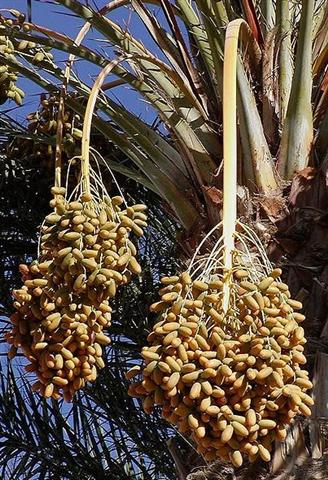
inspired the name
Hatinga Te Kohe - for a
place not
to be found on the maps of
the Easter Egg Island:
|
1. PU
MAHORE |
Poko Uri |
Te Manavai |
Te Kioe Uri |
Te Piringa Aniva |
Te Pei |
Te Pou |
Hua Reva |
|
Akahanga |
10. Hatinga Te Kohe |
Roto Ire Are |
Tama |
One Tea |
HANGA
TAKAURE |
Poike |
16. Pua Katiki |
| Maunga Teatea |
Mahatua |
Taharoa |
20. HANGA
HOONU |
|
RANGI
MEAMEA |
Peke Tau O Hiti |
Maunga Hau Epa |
24. HANGA MORIA ONE |
|
Atiga.
Angle, corner. Mgv.:
hatiga, the
corner of a house;
hatiga,
hatihatiga, the
joints or
articulation of a
limb. Mq.: fatina,
hatika,
joint, articulation,
link. Ta.:
fatiraa,
articulation.
Churchill. |
|
Koe.
I tu'u mai ai a koe.
Du kamst / du bist
angekommen. Bergmann.
Kohe.
A plant
(genus Filicinea)
that grows on the coast.
Vanaga.
Vave
kai kohe,
inaccessible. Churchill.
*Kofe is the name
for bamboo on most
Polynesian islands, but
today on Easter Island
kohe is the name
of a fern that grows
near the beach. Barthel
2. |
... During his descent the
ancestor still possessed the
quality of a water spirit,
and his body, though
preserving its human
appearance, owing to its
being that of a regenerated
man, was equipped with four
flexible limbs like serpents
after the pattern of the
arms of the Great Nummo. The
ground was rapidly
approaching. The ancestor
was still standing, his arms
in front of him and the
hammer and anvil hanging
across his limbs. The shock
of his final impact on the
earth when he came to the
end of the rainbow,
scattered in a cloud of dust
the animals, vegetables and
men disposed on the steps.
When calm was restored, the
smith was still on the roof,
standing erect facing
towards the north, his tools
still in the same position.
But in the shock of landing
the hammer and the anvil had
broken his arms and legs at
the level of elbows and
knees, which he did not have
before. He thus acquired the
joints proper to the new
human form, which was to
spread over the earth and to
devote itself to toil
...
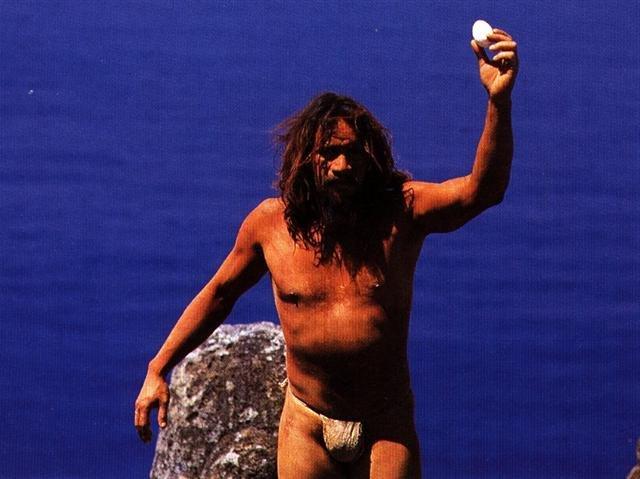
|
0. Nga Kope Ririva Tutuu
Vai A Taanga |
... Manu-tera, the
Easter Island name for the
sooty tern, means literally
'sunbird'. From this we take
it as very likely, though
there is no proof, that the
tern would have been seen as
a symbol of the sun - just
as the falcon and the
phoenix were symbols of the
sun in ancient Egypt. The
latter, the mythical
Bennu bird, was
associated with
Heliopolis ('the City of
the Sun') and with the
pyramid-shaped Benben
sunstone,
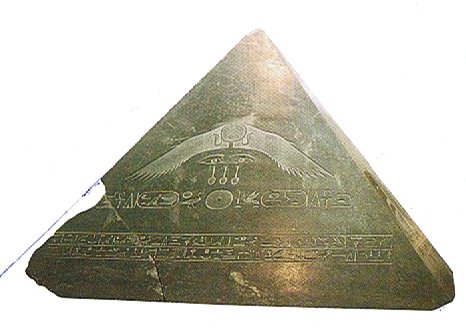
and was famously linked to an
egg:
As its end approached the
phoenix fashioned a nest of
aromatic boughs and spices, set
it on fire, and was consumed in
the flames. From the pyre
miraculously sprang a new
phoenix, which, after embalming
its father's ashes in an egg of
myrrh, flew with the ashes to
Heliopolis where it
deposited them on the altar in
the temple of the sun god Ra.
The possibility cannot be ruled
out that the birdman cult of
Easter Island may have expressed
ideas such as these. 'If one
were to propose antecedents to
the practice', comments the
historian R. A. Jairazbhoy: the
thought of the Egg of the
Egyptian sun god (the cosmic
egg) would have to come to mind.
The Book of the Dead says
that this egg was laid by
Kenkenur, or 'the Great
Cackler' (an alias of the
phoenix), and the deceased
watches and guards it. This is
declared in the Chapter headed
'Having Dominion over the Water
in the Underworld'. And again
the journey on the reed float
across the sea is reminiscent of
the journey of the Egyptian sun
god Ra to the horizon on
reed floats ...
Tara
was a thorn (etc), and manu
tara was the bird who returned
at the corner of spring:
|
Tara.
1. Thorn: tara
miro. 2. Spur:
tara moa. 3.
Corner; te tara o
te hare, corner
of house; tara o
te ahu, corner
of ahu.
Vanaga. (1. Dollar;
moni tara,
id.) 2. Thorn,
spike, horn;
taratara,
prickly, rough, full
of rocks. P Pau.:
taratara, a ray,
a beam; tare,
a spine, a thorn.
Mgv.: tara,
spine, thorn, horn,
crest, fishbone.
Mq.: taá,
spine, needle,
thorn, sharp point,
dart, harpoon;
taa, the corner
of a house, angle.
Ta.: tara,
spine, horn, spur,
the corner of a
house, angle. Sa.:
tala, the
round end of a
house. Ma.: tara,
the side wall of a
house. 3. To
announce, to
proclaim, to
promulgate, to call,
to slander;
tatara, to make
a genealogy. P Pau.:
fakatara, to
enjoin. Mq.: taá,
to cry, to call. 4.
Mgv.: tara, a
species of banana.
Mq.: taa, a
plant, a bird.
Ma.: tara, a bird. 5. Ta.: tara, enchantment. Ma.:
tara, an
incantation. 6. Ta.:
tara, to
untie. Sa.: tala,
id. Ha.: kala,
id. Churchill.
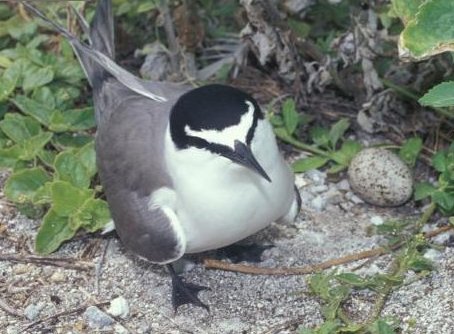 |
... In
ancient
Egypt there
was also a
special type
of bird to
indicate
this, the
benu
bird (named
phoenix by
the Greeks).
According to
Wilkinson
the benu
bird was a
heron (Ardea
cinerea - cǐnis
=
ashes) and
'...
standing for
itself on an
isolated
rock or on a
little
island in
the middle
of the water
the heron
was an
appropriate
image for
how the
first life
appeared on
the primary
hill which
arose from
the watery
chaos at the
time of the
original
creation.'
'Similarly
to the sun
the heron
rose up from
the primary
waters, and
its Egyptian
name,
benu,
was
probably
derived from
the word
weben,
to 'rise' or
'shine'.
This
magnificent
wader was
also
associated
with the
inundations
of the
Nile.'
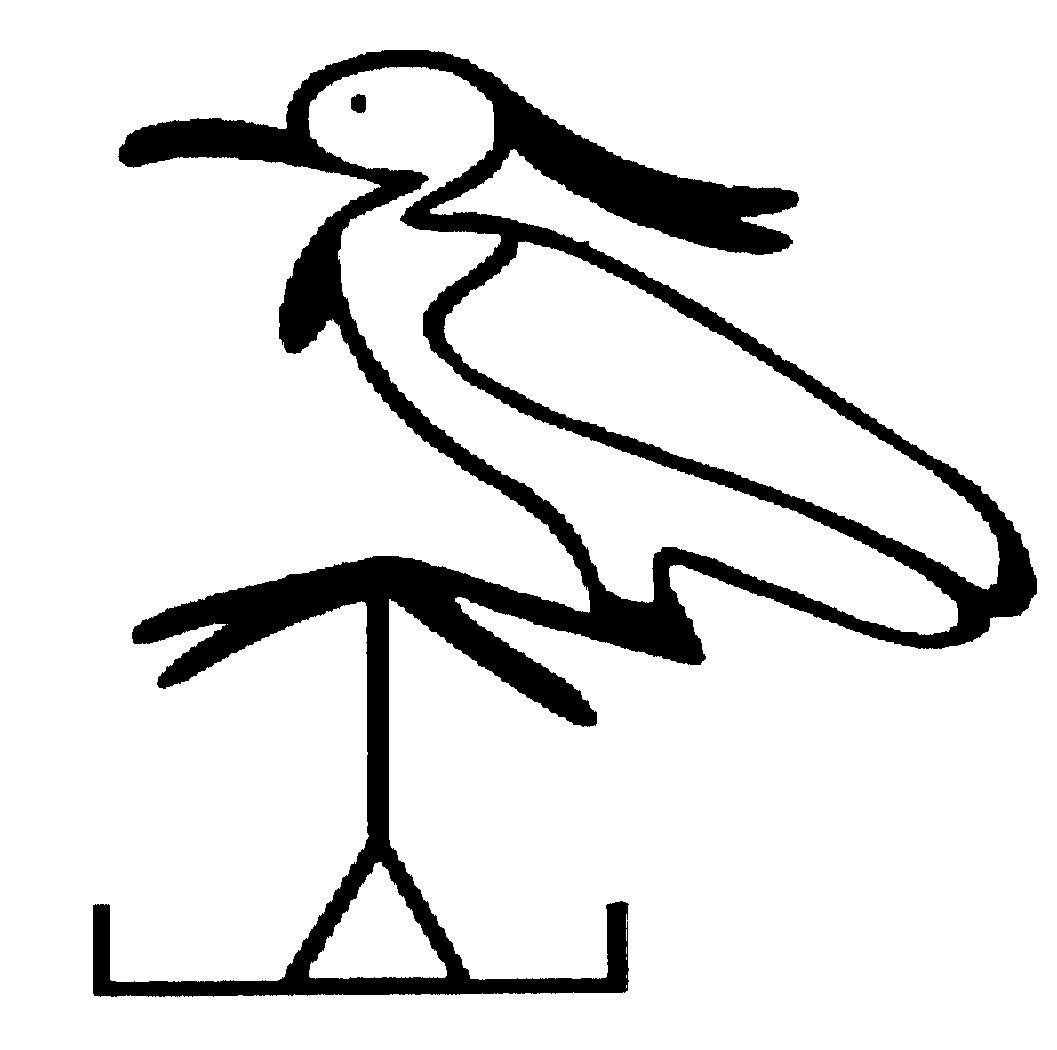
But herons
have
straight
beaks in
order to be
able to
harpoon
frogs and
fishes. The
picture
above, also
from
Wilkinson,
instead
suggests a
slightly
bent beak.
'As a symbol
for the sun
the heron
was the
sacred bird
of
Heliopolis [helios
= sun,
polis =
city], which
became the
mythical
phoenix of
the Greeks.
Without
doubt
through its
association
with the
descending
and rising
sun the
heron was
comprehended
as lord over
the royal
jubilee of
rejuvenation,
which was
staged for a
pharao who
had reigned
in thirty
years.'
|
Hatchmarks across the normal
henua (earth) type of
glyph probably indicated
light was absent:
|
SEPT 17 (260) |
18 |
19 (*182) |
 |
 |
 |
|
Ga7-11 (180,
tamaiti) |
Ga7-12 (tail fish,
ika hiku) |
Ga7-13 (→ 7 * 13 =
91) |
|
... Mermaid's purses
(also known as
Devil's Purses) are
the egg cases of
skates, sharks and
rays. They are among
the common objects
which are washed up
by the sea. Because
they are
lightweight, they
are often found at
the furthest point
of the high tide.
The eggcases that
wash up on beaches
are usually empty,
the young fish
having already
hatched out
... |
|
ψ Scorpii (244.6),
LESATH (Sting) = ν
Scorpii
(244.8) |
χ Scorpii (245.1),
YED PRIOR (Hand in
Front) = δ Ophiuchi,
δ Tr. Austr. (245.5) |
YED POSTERIOR (Hand
Behind) = ε Ophiuchi,
RUKBALGETHI SHEMALI
(Knee, rukbah, of
Broken Palm-branch)
= Τ Herculis
(246.6). δ Apodis
(246.7), ο Scorpii
(246.8) |
|
... The manner of
his death can be
reconstructed from a
variety of legends,
folk-customs and
other religious
survivals. At
mid-summer, at the
end of a half-year
reign, Hercules is
made drunk with mead
and led into the
middle of a circle
of twelve stones
arranged around an
oak, in front of
which stands an
altar-stone; the
oak has been lopped
until it is T-shaped.
He is bound to it
with willow thongs
in the 'five-fold
bond' which joins
wrists, neck, and
ankles together,
beaten by his
comrades till he
faints, then flayed,
blinded, castrated,
impaled with a
mistletoe stake, and
finally hacked into
joints on the
altar-stone. His
blood is caught in a
basin and used for
sprinkling the whole
tribe to make them
vigorous and
fruitful. The joints
are roasted at twin
fires of
oak-loppings,
kindled with sacred
fire preserved from
a lightning-blasted
oak or made by
twirling an alder-
or cornel-wood
fire-drill in an oak
log. The trunk is
then uprooted and
split into faggots
which are added to
the flames. The
twelve merry-men
rush in a wild
figure-of-eight
dance around the
fires, singing
ecstatically and
tearing at the flesh
with their teeth.
The bloody remains
are burnt in the
fire, all except the
genitals and the
head. These are put
into an alder-wood
boat and floated
down the river to an
islet; though the
head is sometimes
cured with smoke and
preserved for
oracular use. His
tanist succeeds him
and reigns for the
remainder of the
year, when he is
sacrificially killed
by a new Hercules
... |
|
Nov 20 (324) |
21 (*245) |
22 |
|
°Nov 16 (320) |
17 |
18 (*242) |
|
'Oct 24 |
25 (*218) |
26 (299) |
|
"Oct 10 |
11 (*204) |
Tangaroa Uri 12
(285) |
|
CLOSE TO THE FULL
MOON: |
|
MARCH 19 (78 = 260 +
183 - 365) |
20 (*364) |
0h |
|
BEID (Egg)
= ο¹ Eridani
(62.2), μ Persei
(62.8)
VINDEMIATRIX ( ε
Virginis) |
Al Dabarān-2 (The
Follower)
HYADUM I = γ Tauri
(63.4)
*22 = *63.4 - 41.4 |
HYADUM II = δ¹ Tauri
(64.2) |
|
May 22 |
23 (*63) |
24 (144) |
|
°May 18 |
19 (*59) |
20 (140) |
|
'April 25 (*400) |
26 (*36) |
27 (117) |
|
"April 11 (101) |
12 (*22) |
Vaitu Nui
13 |
Tangaroa
Uri 12 (285) came 3 days
before the arrival of the double-canoe of
Hotu A Matua and his
Queen,
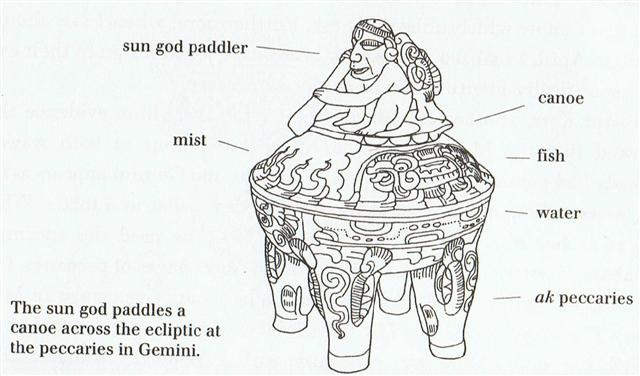
and day 285 was 93 (= 3 * 31
= 465 / 5) right
ascension days after the day
when the Full Moon had been
at Te Pou (*295).
*205 - *93 = *112
(16 weeks) = *295 -
*183.
Ga4-6 (at
Te Pou) has a suggestion
of a bent (broken) henua:
|
JUNE 13
(*84) |
14 |
15 |
16 |
17 (168 = 2
* 84) |
18 |
19 (*90) |
 |
 |
 |
 |
 |
 |
 |
|
Ga4-1 (68 +
16) |
Ga4-2 |
Ga4-3 |
Ga4-4 |
Ga4-5 (88) |
Ga4-6 |
Ga4-7
|
|
υ¹ Hydrae
(148.4), RAS
ELASET
BOREALIS
(Northern
Head of the
Lion) = μ
Leonis
(148.7)
*107 =
*148.4 -
*41.4 |
TSEEN KE
(Heaven's
Record) = φ
Velorum
(149.9) |
ν Leonis
(150.1), π
Leonis
(150.6) |
υ² Hydrae
(151.8) |
Al Jabhah-8
(Forehead) /
Maghā-10
(Bountiful)
/
Sharru-14
(King)
10h (152.2)
AL JABHAH =
η Leonis
(152.4),
REGULUS
(Little
King) = α
Leonis
(152.7)
*111 =
*152.4 -
*41.4 |
λ Hydrae
(153.2) |
ADHAFERA
(Forehead) =
ζ Leonis,
TANIA
BOREALIS = λ
Ursae
Majoris,
SIMIRAM = ω
Carinae
(154.7) |
|
Aug 16
(*148) |
17 (229) |
18 |
19 |
20 (*152) |
21 |
22 |
|
°Aug 12
(*144) |
13 (225) |
14 |
15 |
16 (*148) |
17 |
18 |
|
'July 20
(*121) |
21 |
22 / 7 |
23 |
24 (*125) |
25 |
26 |
|
"July 6
(*107) |
7 |
8 |
9 |
Anakena 10
2nd Te Pou |
"July 11 |
12 (193) |
|
2nd time at
Hanga Te Pau |
| Egyptian menchet |
 |
Phoenician lamedh |
 |
Greek lambda |
Λ (λ) |
|
... Wikipedia has no information regarding the origin of the Phoenician lamedh, but the Egyptian 'cloth' hieroglyph (menchet) is - I suggest - related to the 4 upside down sky pillars. I.e. the basic element of the 'covering' hieroglyph could have indicated darkness:


... Men's spirits were thought to dwell in the Milky Way between incarnations. This conception has been handed down as an Orphic and Pythagorean tradition fitting into the frame of the migration of the soul. Macrobius, who has provided the broadest report on the matter, has it that souls ascend by way of Capricorn, and then, in order to be reborn, descend again through the 'Gate of Cancer'. Macrobius talks of signs; the constellations rising at the solstices in his time (and still in ours) were Gemini and Sagittarius: the 'Gate of Cancer' means Gemini ...
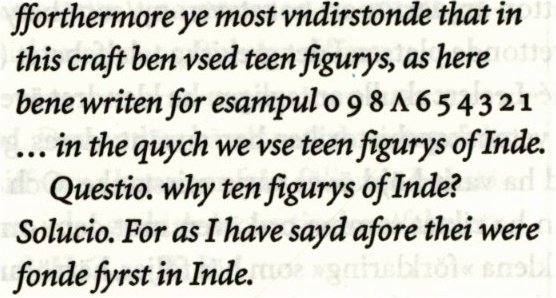
 |
|
|
... He got
up, the path
went uphill,
and he came
(back) to
the house.
It was dark
when he
reached the
house. When
he came to
the yam
plantation
of Kuukuu,
he sat down.
Night was
falling.
Ira
asked
Makoi
the
following
question:
'How did you
fare when
you
wandered,
when you
went
searching,
when you
found
yourself on
the path of
the dream
soul of the
father?'
Makoi
replied,
'There are
indeed all
those
places. I
did not
forget them
at all (?
kai viri kai
viri)
when I saw
them (text
corrected,
i-ui-nei).
I alone saw
no fewer
than four of
my [sic!]
places, and
I returned
here only
because
night was
falling.'
Then Ira
spoke again:
'How did you
name them,
last-born?'
Makoi
replied,
'This is
what
happened,
this is how
I gave the
names. I
wrote (ta)
Te
Manavai A
Hau Maka
on the
surface of a
banana leaf
(kaka),
and this is
how I left
it.' This is
how Makoi
remembered
it. No
sooner had
he said
this, when
Ira
gew angry
and
quarrelled
with
Makoi.
He said the
following
(to him):
'You did not
pay
attention,
last-born,
and you did
not give the
(full) name.
This is how
it should
be: the
Manavai of
Hau Maka of
Hiva,
in memory (mo
aringa ora)
of the
father, of
his dream
soul.'
Makoi
replied, 'In
Hiva
the land
belongs to
him - this
land here is
mine, not
his!' [E:21]
They stayed
(there
longer).
On the fifth
day of the
month of
July (Anakena)
[day 227 at
the time of
rongorongo],
they all got
up, went
downhill,
went on, and
reached
Hanga Te Pau.
They took
their
provisions
with them,
carrying
them on
their
shoulders,
went on, and
reached
Te Pou.
They made
camp and
slept in
Te Pou
on the tenth
of the month
of July (Anakena).
Then they
all got up,
carried
their
provision on
their
shoulders,
went
straight
ahead, and
followed the
path of the
dream soul
of Hau
Maka.
They came to
Hua Reva
and said,
This is
Hua Reva A
Hau Maka!
There were
*111 (Anakena
10) -
*81 (Hanga
Te Pau)
= 30 right
ascension
days from
their
Landfall to
10h, from
Ga2-28 (58)
to Ga4-5
(88). From
Landfall to
the 2nd time
they reached
Hanga Te
Pau
there were
186 - 161 =
25 days,
suggesting
Hanga Te
Pau was
a dark
regenerativ
time
belonging to
Saturn. |
|
CLOSE TO THE
FULL MOON: |
|
DEC 13 |
14 (*268) |
15 |
16 (350) |
17 |
18 |
19 |
|
Poko Uri |
Te
Manavai |
Te Kioe
Uri |
Te
Piringa
Aniva |
Te Pei |
7. Te Pou |
Hua Reva |
|
KUH
(Weeping) =
μ Capricorni
(331.4),
γ Gruis
(331.5)
*290 =
*331.4 -
*41.4 |
no star
listed (332) |
η Piscis
Austrini
(333.4)
*292 =
*333.4 -
*41.4 |
22h (334.8)
KAE UH
(Roof) = ο
Aquarii
(334.0),
AL KURHAH
(White Spot)
= ξ Cephei
(334.4),
SADALMELIK
(Lucky King)
= α Aquarii,
AL DHANAB
(The Tail) =
λ Gruis
(334.6), ι
Aquarii, ν
Pegasi
(334.7)
*293 =
*334.4 -
*41.4 |
ι Pegasi
(335.0),
ALNAIR (The
Bright One)
= α Gruis
(335.1), μ
Piscis
Austrini, υ
Piscis
Austrini
(335.3),
WOO (Pestle)
= π Pegasi
(335.7),
BAHAM = θ
Pegasi,
τ Piscis
Austrini
(335.8) |
ζ Cephei
(336.2),
λ Cephei
(336.3),
-/270 Lac.
(336.7),
λ Piscis
Austrini
(336.8) |
μ Gruis
(337.0), ε
Cephei
(337.2),
1/325 Lac.
(337.3),
ANCHA
(Haunch) = θ
Aquarii
(337.4), ψ
Oct.
(337.5), α
Tucanae
(337.9) |
|
Febr 15
(2-15) |
16 |
17 (14 *
29½) |
18 (414) |
19 |
20 (*336 = 4
* 84) |
21 (52) |
|
°Febr 11 |
12 |
13 |
2-14 |
15 |
16 (*332) |
17 (413) |
|
'Jan 19
(384) |
20 |
21 |
22 |
23 (*308) |
24 |
25 |
|
"Jan 5 |
6 |
7 (372) |
8 |
9 |
Tua Haro 10
(*295) |
11 |
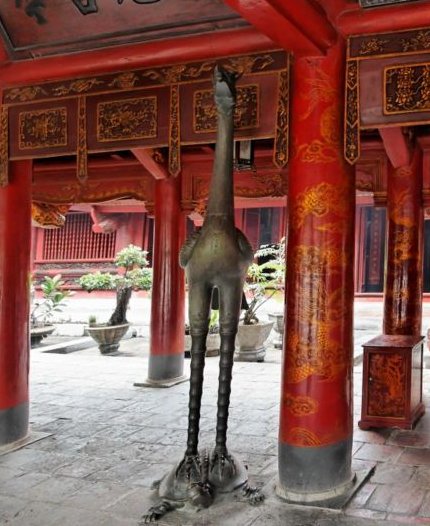
..
Horapollo,
the
grammarian
of
Alexandria,
about A.D.
400, tells
us that the
crane was
the symbol
of a
star-observer
in Egypt ... |
From
the year 755 (when
Cancer had been at July
11 according to the
Mayas) to AD 1842
(my assumed baseline
for the rongorongo
texts) there were
around (1842 - 755)
/ 71 = 15
precessional days.
This seems to point
to the
time of the Bull,
when in JANUARY 31
the old year would end
(terminate). 192
(JULY 11) - 31 = 161
(JUNE 10).
... Midsummer is
the flowering
season of the
oak, which is
the tree of
endurance and
triumph, and
like the ash is
said to 'court
the lightning
flash'. Its
roots are
believed to
extend as deep
underground as
its branches
rise in the air
- Virgil
mentions this -
which makes it
emblematic of a
god whose law
runs both in
Heaven and in
the Underworld
... The
month, which takes
its name from
Juppiter the
oak-god, begins on
June 10th and
ends of July 7th.
Midway comes St.
John's Day, June
24th, the day on
which the oak-king
was sacrificially
burned alive. The
Celtic year was
divided into two
halves with the
second half
beginning in July,
apparently after a
seven-day wake, or
funeral feast, in
the oak-king's
honour
...
|
JAN 30 |
31 (396) |
FEBR 1 |
2 (33) |
3 |
4 (*320) |
45 |
59 |
 |
 |
 |
 |
 |
 |
|
Gb7-12
(193) |
Gb7-13 |
Gb7-14 |
Gb7-15 |
Gb7-16 |
Gb7-17
(427) |
|
no star
listed
(14) |
1h
(15.2)
β
Phoenicis
(15.1),
υ
Phoenicis,
ι
Tucanae
(15.6),
η Ceti,
ζ
Phoenicis
(15.7) |
Al Batn
Al
Hūt-26
(Belly
of the
Fish) /
Revati-28
(Prosperous)
/
1-iku
(Field
Measure)
MIRACH
(Girdle)
= β
Andromedae,
KEUN MAN
MUN
(Camp's
South
Gate) =
φ
Andromedae
(16.0),
ANUNITUM
= τ
Piscium
(16.5),
REVATI
(Abundant)
= ζ
Piscium
(16.9)
REGULUS
(α
Leonis) |
ν
Phoenicis
(17.4),
κ
Tucanae
(17.6) |
no star
listed
(18) |
ADHIL
(Garment's
Train) =
ξ
Andromedae
(19.3),
θ Ceti
(19.7) |
|
April 4 |
5 (460) |
6 |
7 |
8 (*383) |
9 (99) |
|
°March
31 |
°April 1
(91) |
2 (*377) |
3 |
4 |
5 (460) |
|
'March 8 |
9 |
10 |
11
(*355) |
12 |
13 (72) |
|
"Febr 22
(53) |
TERMINALIA |
24 (420) |
Tehetu'upú
25 |
26 |
27
(*343) |
| CLOSE TO THE FULL MOON: |
|
AUG 1 |
2 (214 =
31 +
183) |
3 (*135) |
4 (*501) |
5 |
6 |
|
13h
(197.8)
ξ¹
Centauri
(197.1),
ξ²
Centauri
(197.9) |
APAMI-ATSA
(Child
of
Waters)
= θ
Virginis,
ψ Hydrae
(198.5),
DIADEM =
α Com.
Ber.
(198.9) |
AL
DAFĪRAH
(Tuft) =
β Com.
Ber.
(199.4) |
σ
Virginis
(200.4) |
γ Hydrae
(201.0),
ι
Centauri
(201.4) |
Al
Simāk-12
(Lofty)
/
Chitra-14
(Bright
One) /
Horn-1
(Crocodile)
/
Sa-Sha-Shirū-20
(Virgin's
Girdle)
/
ANA-ROTO-3
(Middle
pillar)
MIZAR
(Girdle)
= ζ
Ursae
Majoris
(202.4),
SPICA =
α
Virginis,
ALCOR =
80 Ursae
Majoris
(202.7)
SADALMELIK
(α
Aquarii) |
|
Oct 4
(277) |
5 |
6 |
7 (*200) |
8 |
9 |
8 * 13 |
|
°Sept 30
(273) |
°Oct 1 |
2 |
3 (*196) |
4 |
5 |
|
'Sept 7
(250) |
8 |
9 |
10
(*173) |
11 |
12 |
|
"Aug 24
(236) |
25 |
26 |
Hora Iti
27 |
28 |
29
(*161) |
And the
Bright Fire
(λ Cancri)
would have
arrived in
Mayan day 190,
with the
Nose of the
Great Bear (ο Ursae
Majoris)
located 16
weeks
after 0h. Or better:
108 days
after the
Julian
equinox:
|
MAY
20
(80
+
60) |
21 |
22 |
23
(*63) |
 |
 |
 |
 |
|
Ga3-1 |
Ga3-2
(aaa) |
Ga3-3 |
Ga3-4
(63) |
|
AL
TARF
(The
End)
= β
Cancri
(124.3)
RAS
ALGETHI
(α
Herculis) |
χ
Cancri
(125.2),
BRIGHT
FIRE
= λ
Cancri
(125.4) |
AVIOR
= ε
Carinae
(126.4),
φ
Cancri
(126.8)
*85
=
(*126.4
-
*41.4) |
ο
Ursae
Majoris
(127.4)
*86
=
(*127.4
-
*41.4) |
|
July
23
(177
+ 27
=
204) |
24 |
25 |
26
(148
+
59) |
|
°July
19
(200
=
177
+
23) |
20 |
21 |
22 |
|
Mayan: |
(205
- 15
=
190) |
191 |
192
(*112
=
*86
+
*26) |
|
'June
26
(6 *
29½) |
27 |
28 |
29
(180
=
192
-
12) |
|
"June
12
(163
=
177
-
14) |
13
(*84
=
*125.4
-
*41.4) |
14
(165
+
365) |
Te
Maro
15
(18
*
29½) |

Makoi
got
up
and
began
to
familiarize
himself
with
the
(new)
land.
(This
took
place)
on
the
fifteenth
day
of
the
month
of
June
('Maro').
He
went
toward
the
sheer
face
of
the
rocks
(titi
o te
opata),
was
astonished
(aaa),
came
up
to
the
middle
(of
the
outer
rim
of
the
crater),
and
stood
at
the
very
edge.

He
looked
down
and
saw
the
'Pu
Mahore
of
Hau
Maka'
(on
the
coast)
and
said,
'There
it
is,
the
hole
of
the
mahore
fish
of
Hau
Maka!'
He
turned
his
face
and
looked
toward
the
back
(i.e.,
in
the
direction
of
the
crater).
No
sooner
had
he
seen
how
the
dark
abyss
opened
up
(below
him),
when
a
fragrant
breeze
came
drifting
by.
Again
Makoi
said,
'This
is
the
dark
abyss
of
Hau
Maka'.
He
turned
around,
walked
on
in
utter
amazement,
and
arrived
at
the
house.
He
spoke
to
Ira,
'Hey
you,
my
friends!
How
forgetful
we
(truly)
are.
This
place
is
adequate
(?
tau
or
'beautiful'),
the
dark
abyss
lies
there
peacefully!'
Ira
replied,
'And
what
should
that
remind
us
of
up
here?'
All
arose
and
climbed
up.
They
went
on
and
arrived;
they
all
had
a
good
look
(at
the
inside
of
the
crater).
They
returned
home
and
sat
down.
Night
fell,
and
they
went
to
sleep
...

...
This
mythical
bird
is
Itzam-Yeh,
Classic
prototype
of
Wuqub-Kaqix,
'Seven-Macaw',
of
Popol
Vuh
fame.
In
that
story,
in
the
time
before
the
sky
was
lifted
up
to
make
room
for
the
light,
the
vainglorious
Seven-Macaw
[=
Ursa
Major]
imagined
himself
to
be
the
sun.
Offended
by
his
pride,
the
Hero
Twins
humbled
him
by
breaking
his
beautiful
shining
tooth
[possibly
Thuban
which
shone
closely
above
our
Ursa
Major]
with
a
pellet
from
their
blowgun.
This
pot
shows
One-Ahaw
aiming
at
the
bird
as
he
swoops
down
to
land
in
his
tree.
As
Itzam-Yeh
lands
on
his
perch,
the
text
tells
us
he
is
'entering
or
becoming
the
sky'.
...
The
star
which
at
the
time
of
Seven-Macaw
(the
7
stars
of
Ursa
Major)
had
pointed
out
the
position
at
the
center
of
the
Whirlpool
was
Alioth
(ε
Ursae
Majoris)
...
In
3149
BC
the
stars
were
positioned
70
right
ascension
days
earlier
than
at
the
time
of
rongorongo.
Therefore
η
Andromedae
(at
Legs,
the
place
of
the
Wolf)
would
have
risen
with
the
Sun
in
91
(April
1) -
70 =
21
January
(=
32
days
after
the
solstice).
At
that
time
of
the
year
Alioth
would
have
been
close
to
the
Full
Moon
in
day
21 +
183
=
204
(23
July)
...
...
The
date
in
the
year
3149
BC,
when
the
false
sun
bird
Itzam-Yeh
(alias
Seven-Macaw)
had
been
defeated,
was
28
May
and
at
the
time
of
rongorongo
the
alpha-star
of
the
Bull
(Aldebaran)
rose
heliacally
in
May
28
(148)
... |
| Last 4 of the first 7 places named by Makoi:
Possibly these places were alluding also to the change from the Julian spring equinox to the Gregorian spring equinox:
... When the Pope rearranged the day for spring equinox from number 84 ('March 25) to number 80 (ºMarch 21) the earlier Julian structure was buried, was covered up (puo). At the same time the Pope deliberately avoided to correct the flow of Julian calendar days for what he may have regarded as 4 unneccesary leap days prior to the Council of Nicaea. Thus his balance sheet for days was in order. The day numbers counted from the equinox were increased with 4 and this was equal to allowing the 4 'unneccessary' leap days to remain in place. But he had moved spring equinox to a position which was 4 days too early compared to the ancient model ... These '4 unneccessary leap days' (prior to the Council of Nicaea) were equal in number to the precessional distance in time between the Pope and the time of rongorongo. The Gregorian calendar could therefore be easily understood by the Easter Islanders. The Pope had created a 'crooked calendar' but since his time the precession had fixed it ...

|
| MAY 25 (5-25) |
26 (*266) |
27 |
28 (348) |
 |
 |
 |
 |
| Ga3-6 |
Ga3-7 |
Ga3-8 |
Ga3-9 (68) |
| Āshleshā-9 (Embrace) / Willow-24 (Stag)
π¹ Ursa Majoris, δ Hydrae (129.6), AL MINHAR AL SHUJĀ = σ Hydrae, MUSEIDA = π² Ursae Majoris (129.9)
RAS ALHAGUE (α Ophiuchi)
|
Al Nathrah-6 (Gap)
BEEHIVE (Exhalation of Piled-up Corpses) = ε Cancri, η Pyxidis (130.4), XESTUS = ο Velorum (130.5), ζ Pyxidis (130.7), ASCELLUS BOREALIS = γ Cancri, β Pyxidis (130.9)
*89 = *130.4 - *41.4 |
Extended Net-26a (Ox) / Arkū-sha-nangaru-sha-shūtu-12 (Southeast Star in the Crab)
η Hydrae (131.0), ASCELLUS AUSTRALIS = δ Cancri (131.4), KOO SHE (Bow and Arrow) = δ Velorum (131.6), α Pyxidis (131.8), ε Hydrae (131.9)
*90 = *131.4 - *41.4 |
ι Cancri (132.0), ρ Hydrae (132.4)
*91 = *132.4 - *41.4 |

... A sidelight falls upon the notions connected with the stag by Horapollo's statement concerning the Egyptian writing of 'A long space of time: A Stag's horns grow out each year. A picture of them means a long space of time.' Chairemon (hieroglyph no. 15, quoted by Tzetzes) made it shorter: 'eniautos: elaphos'. Louis Keimer, stressing the absence of stags in Egypt, pointed to the Oryx (Capra Nubiana) as the appropriate 'ersatz', whose head was, indeed, used for writing the word rnp = year, eventually in 'the Lord of the Year', a well-known title of Ptah. Rare as this modus of writing the word seems to have been - the Wörterbuch der Aegyptischen Sprache (eds. Erman and Grapow), vol. 2, pp. 429-33, does not even mention this variant - it is worth considering (as in every subject dealt with by Keimer), the more so as Chairemon continues his list by offering as number 16: 'eniautos: phoinix', i.e., a different span of time, the much-discussed 'Phoenix-period' (ca. 500 years) ... |
| July 28 |
29 (*130) |
30 |
31 (212) |
| °July 24 |
25 |
26 (*127) |
27 (208) |
| 194 |
195 |
196 |
197 (= 185 + 12) |
| 'July 1 |
2 |
3 (*104) |
4 (185) |
| "June 17
Te Kioe Uri |
18
Te Piringa Aniva |
19 (*90)
Te Pei |
Te Maro 20 (185 - 14)
Te Pou |
| CLOSE TO THE FULL MOON: |
| NOV 24 |
25 (*249) |
26 |
27 (331) |
| ROTANEV = β Delphini, ι Delphini (312.3), τ Capricorni (312.6), κ Delphini (312.7), SVALOCIN = α Delphini, υ Capricorni, υ Pavonis (312.8) |
μ², μ¹ Oct. (313.2), DENEB CYGNI (Tail of the Swan) = α Cygni (313.5), β Pavonis (313.6), δ Delphini (313.8) |
Al Sa’d al Bula'-21 (Good Fortune of the Swallower) / Dhanishta-24 (Most Famous) / Girl-10 (Bat)
YUE (Battle-Axe) = ψ Capricorni (314.3), GIENAH CYGNI = ε Cygni, η Cephei (314.5), γ Delphini (314.6), σ Pavonis (314.7), ALBALI = ε Aquarii (314.8) |
BATEN ALGIEDI (Belly of the Goat) = ω Capricorni (315.8) |
| Jan 27 |
28 (393) |
29 (*314) |
30 |
| °Jan 23 |
24 |
25 (*310) |
26 |
| 'Dec 31 |
'Jan 1 |
2 |
3 (*288) |
| "Dec 17 |
18 |
19 (*273) |
20 (354) |
|
When it grew light, Makoi arose again. He went off to further explore the area. He went along and came to the 'dark rat'. He looked around and said: 'Here we are at the dark rat of Hau Maka'. He gave it the name Te Kioe Uri A Hau Maka. He went on and came to Te Piringa Aniva. When he arrived there, he looked around and gave the name Te Piringa Aniva. He went on and came to Te Pei, looked around, and said, 'Here it is!' So he gave the name Te Pei A Hau Maka. He went on, all alone he went on, and came to Te Pou. When he arrived there, he looked around and again said, 'Here it is!' and gave the name Te Pou A Hau Maka. |
|
For some reason nothing was said about Te Manavai, which in the journey of the kuhane came between Poko Uri and Te Kioe Uri.
... The dream soul climbed up and reached the rim of the crater. As soon as the dream soul looked into the crater, she felt a gentle breeze coming toward her. She named the place Poko Uri A Hau Maka O Hiva. The dream soul continued her search for a residence for King Matua. The dream soul of Hau Maka reached (the smaller crater) Manavai and named the place Te Manavai A Hau Maka O Hiva. The dream soul went on and reached Te Kioe Uri. She named the place Te Kioe Uri A Hau Maka O Hiva ...
... Manavai Hollow where rainwater accumulates; anciently, small, round gardens, preferably situated in low shady spots, where the mahute tree was grown. Vanaga. 1. Brain. 2. Valley, ravine, river, torrent, brook; manavai miro, orchard, Mq.: manavai, valley, brook. Ta.: anavai, river, brook. It scarcely appears that these are fully coordinate. In Tahiti anavai has a clear etymology, ana meaning the bed of a stream. In Rapanui and in the Marquesas mana most readily associates with maga, as water in a forked bed. Churchill ...
However, Manuscript E seems to offer an explanation in the way Makoi remembered how he documented the name: ... I wrote (ta) Te Manavai A Hau Maka on the surface of a banana leaf (kaka), and this is how I left it |
.jpg)
| MAY 20 (140) |
21 |
22 |
23 (*63) |
24 (144 = 12 * 12) |
 |
 |
 |
 |
 |
| Ga3-1 (60) |
Ga3-2 (aaa) |
Ga3-3 |
Ga3-4 (= Ga3-22 - 18) |
Ga3-5 |
| AL TARF (The End) = β Cancri (124.3)
RAS ALGETHI (α Herculis)
|
χ Cancri (125.2), BRIGHT FIRE = λ Cancri (125.4)
*84 = *125.4 - *41.4 |
AVIOR = ε Carinae (126.4), φ Cancri (126.8)
*85 = *126.4 - *41.4 |
ο Ursae Majoris (127.4)
*86 = *127.4 - *41.4 |
Pushya-8 (Nourisher)
υ Cancri (128.1), θ Cancri (128.2) |
| July 23 (204) |
24 (*125) |
25 |
26 |
27 (208) |
| °July 19 (200) |
20 (*121) |
21 |
22 / 7 |
23 (204) |
| Mayan: |
(205 - 15 = 190) |
191 |
192
(*112
=
*86
+
*26) |
193 |
| 26 (177 = 6 * 29½) |
'June 27 |
28 |
29 (*100) |
SIRIUS |
| "June 12 |
13 (*84) |
14 (165 + 365) |
Te Maro 15 (18 * 29½) |
16 |
| CLOSE TO THE FULL MOON |
| NOV 19 |
20 |
21 (325) |
23 (*246 = 6 * 41) |
23 (327) |
| GREDI = α Capricorni (307.2), σ Capricorni (307.5), ALSHAT (The Sheep) = ν Capricorni (307.9) |
Al Sa’d al Dhabih-20 (Lucky One of the Slaughterers) / Ox / Herd Boy-9 (Buffalo)
DABIH = β Capricorni (308.0), κ Sagittarii (308.1), SADIR (Hen's Breast) = γ Cygni (308.4), PEACOCK = α Pavonis (308.7) |
KHUFU
MINTAKA (δ Orionis)
OKUL = π Capricorni (309.6), BOS = ρ Capricorni (309.9)
ARNEB (α Leporis)
|
KHAFRE
ALNILAM (ε Orionis)
ο Capricorni (310.2), θ Cephei (310.5)
HEKA (λ Orionis)
|
MENKAURE
ALNITAK (ζ Orionis)
ROTTEN MELON = ε Delphini, φ Pavonis (311.2), η Delphini (311.4), ζ Delphini, ρ Pavonis (311.7)
PHAKT (α Columbae)
|
| Jan 22 |
23 |
24 (*309) |
25 (390) |
26 |
| °Jan 18 (384) |
19 |
20 |
21 (*306) |
22 |
| 372 = 360 + 12 |
373 |
374 = 348 + 26 |
375 = 390 - 15 |
376 |
| 'Dec 26 (360) |
27 |
28 |
29 |
30 (*284) |
| "Dec 12 |
13 |
14 (348 = 366 - 18) |
Ko Koró 15 |
16 (*270) |
 |
... On the last day,
they issue forth to
battle in martial
array. Says
Grimnismal (23):
'Five hundred gates
and forty more - are
in the mighty
building of Walhalla
- eight hundred
'Einherier' come out
of each one gate -
on the time they go
out on defence
against the Wolf.'
That makes 432,000
in all, a number of
significance
from of old. This
number must have had
a very ancient
meaning, for it is
also the number of
syllables in the
Rigveda. But it
goes back to the
basic figure 10,800,
the number of
stanzas in the
Rigveda (40
syllables to a
stanza) which,
together with 108,
occurs insistently
in Indian tradition,
10,800 is also the
number which has
been given by
Heraclitus for the
duration of the
Aiōn, according to
Censorinus (De
die natali, 18),
whereas Berossos
made the Babylonian
Great Year to last
432,000 years.
Again, 10,800 is the
number of bricks of
the Indian
fire-altar (Agnicayana)
...
Shall one add Angkor
to the list? It has
five gates, and to
each of them leads a
road, bridging over
that water ditch
which surrounds the
whole place. Each of
these roads is
bordered by a row of
huge stone figures,
108 per avenue, 54
on each side,
altogether 540
statues of Deva and
Asura, and each row
carries a huge Naga
serpent with nine
heads. Only, they do
not 'carry' that
serpent, they are
shown to 'pull' it,
which indicates that
these 540 statues
are churning the
Milky Ocean,
represented (poorly,
indeed) by the water
ditch, using Mount
Mandara as a
churning staff, and
Vasuki, the prince
of the Nagas, as
their drilling rope
...
The 'incomparably
mighty churn' of the
Sea of Milk, as
described in the
Mahabharata and
Ramayana. The
heads of the deities
on the right are the
Asura, with
unmistakable
'Typhonian'
characteristics.
They stand for the
same power as the
Titans, the
Turanians, and the
people of Untamo, is
short, the 'family'
of the bad uncle,
among whom Seth is
the oldest
representative,
pitted against
Horus, the avenger
of his father Osiris
...
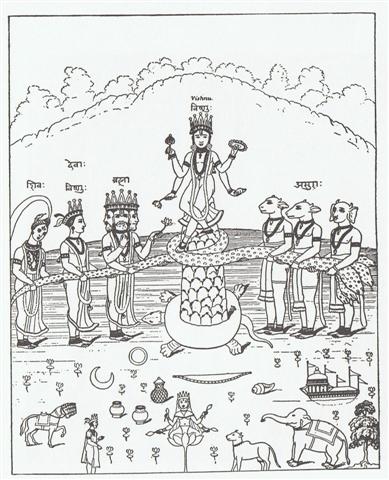
The
Mayas had a 'Maize
Tree' (with Itzam-Yeh
perching
on its top) standing
on 'the Turtle of
Rebirth', at the
'tripod' (3 'stones',
tau toru)
of Rigel, Saiph, and
Alnitak:
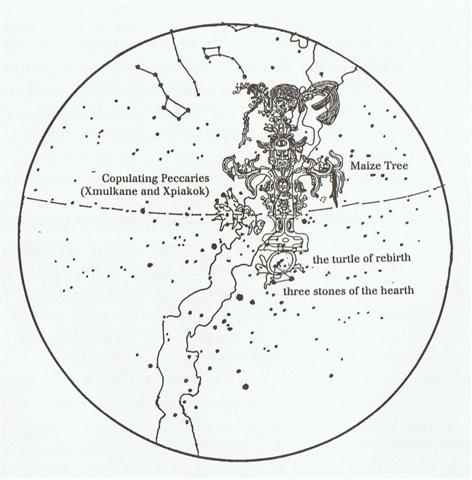
|






























.jpg)



